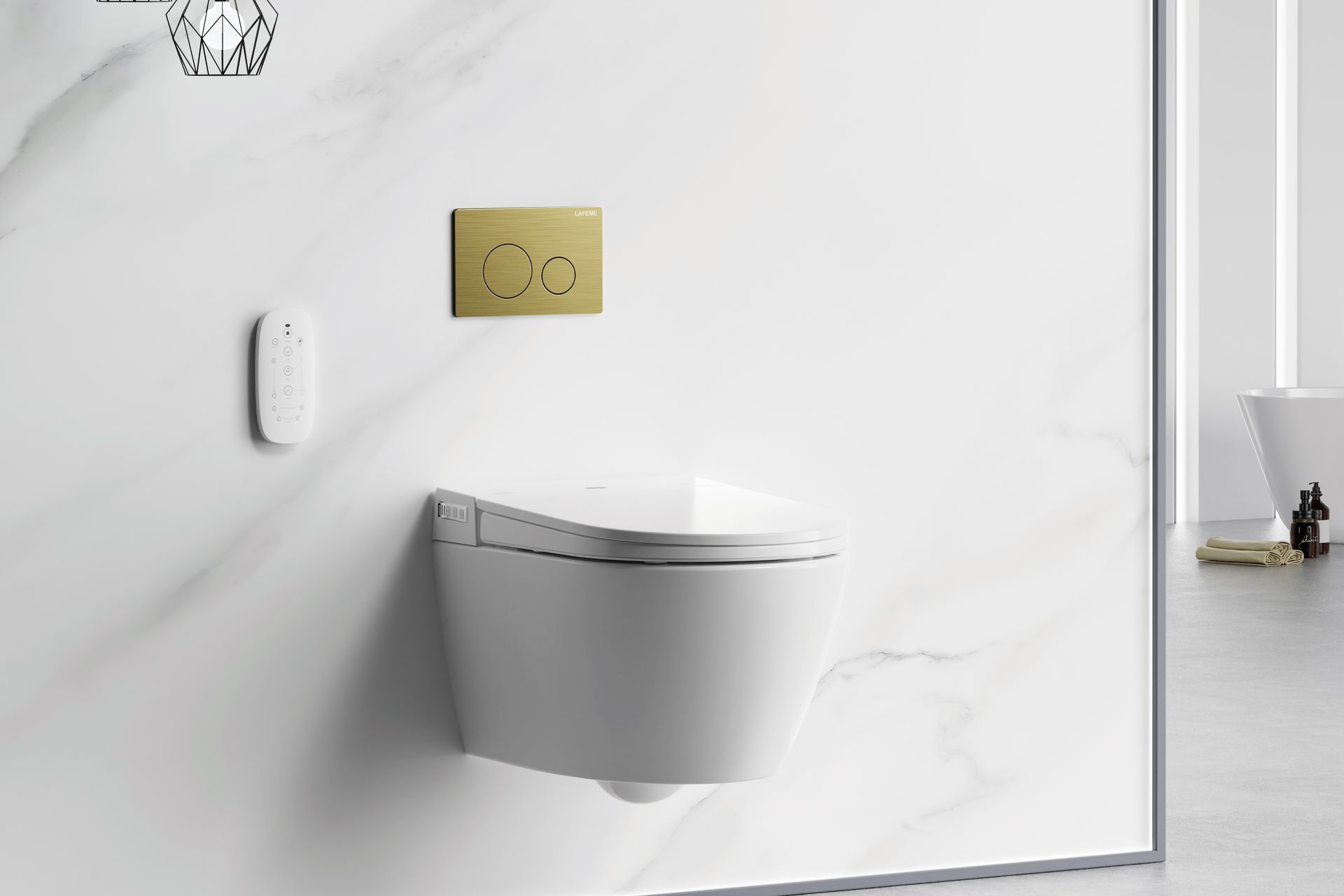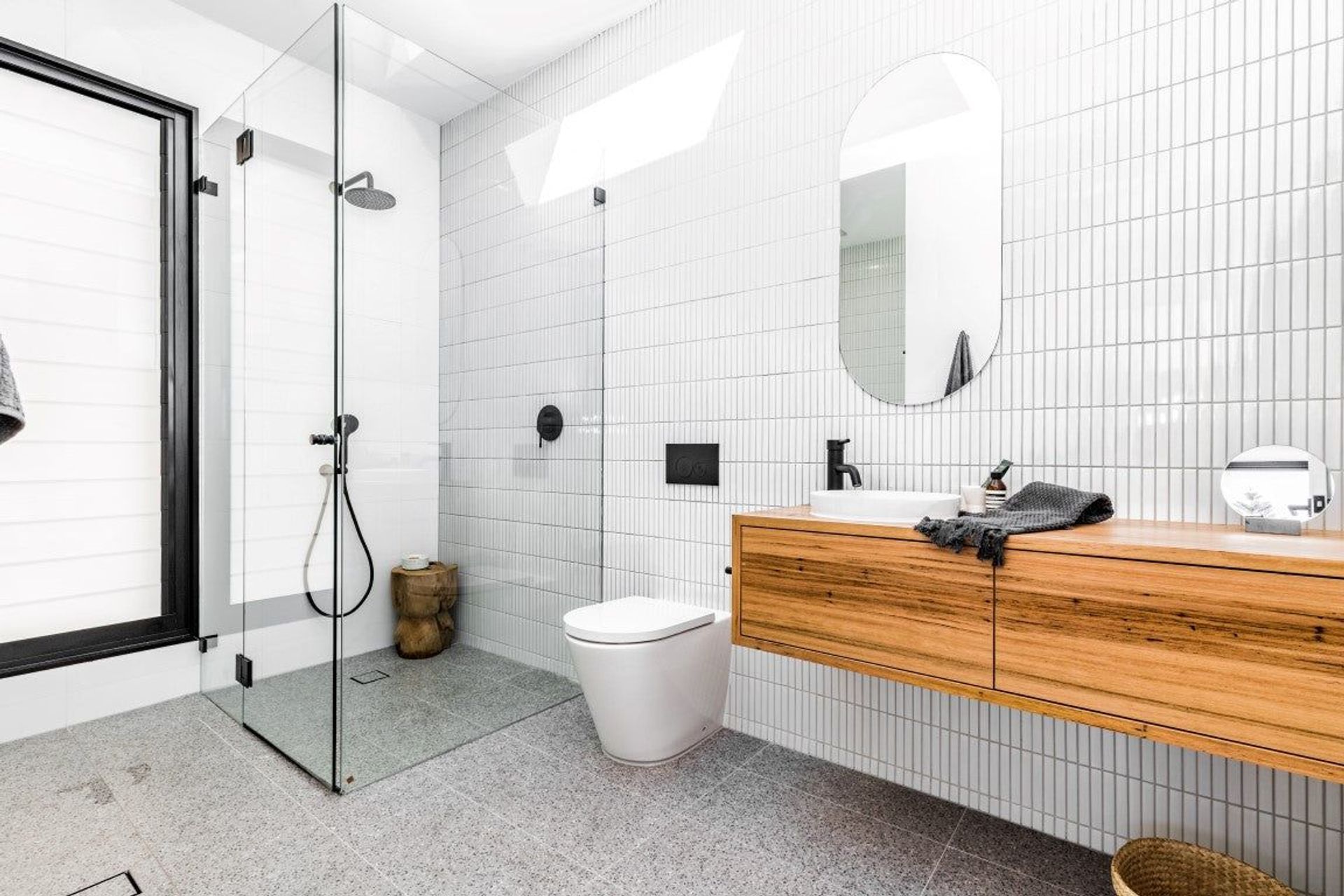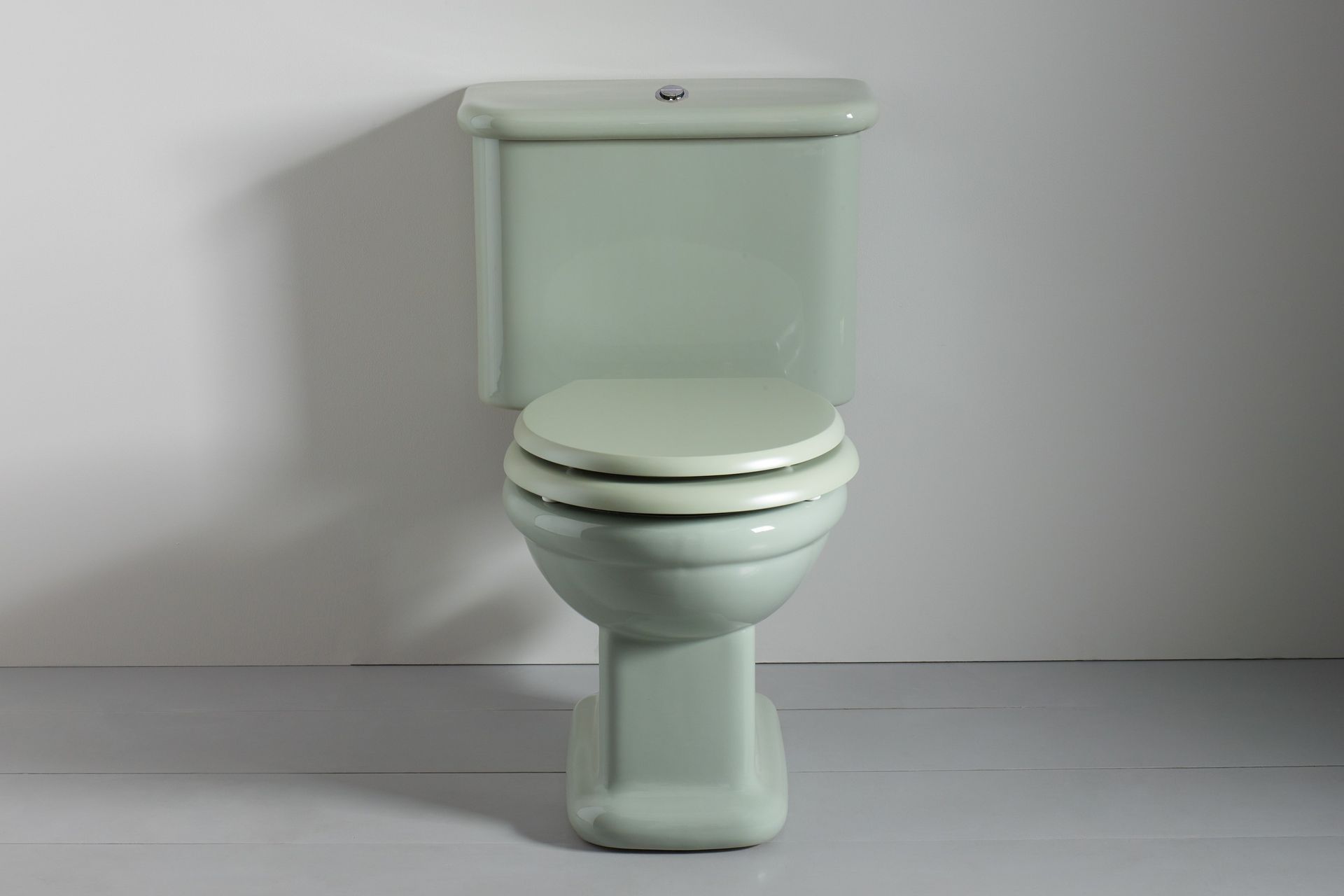Wall-hung vs floor-mounted toilets: pros and cons
Written by
15 March 2023
•
6 min read

Comparing wall-hung vs floor-mounted toilets starts by considering their respective advantages and disadvantages. By getting a good grasp of these, you’ll better understand how they work best and if that aligns with the goals you’re trying to achieve. As any good bathroom designer will tell you, each type has its own merits so it's about deciding what is more suitable and appropriate for the bathroom you have in mind.
Advantages of wall-hung toilets
Wall-hung toilets are toilets that attach directly to the wall, rather than the floor. Because of this, they have different features compared to traditional toilets which have seen them rise in popularity all over the world.
Set your own toilet height
One of the most significant and practical benefits of this is the ability to set the toilet to any height you desire. Before installation, you can dictate exactly where you want it to be placed on the wall.
This is particularly advantageous for anyone with mobility issues. In these cases, you may want the toilet to be lower than a normal toilet. However, there are also other cases where a higher toilet may be desirable.
Stylish appearance
The other big advantage of wall-hung toilets is their appearance. While a standard toilet can come across as large and bulky, wall-hung toilets are slim and sleek. This is because the often unsightly tank is concealed within the wall, giving the bathroom a more modern look.
Space-saving option
This slim and sleek presentation also means that the toilet takes up less room in the bathroom. This has the potential to free up space in a small bathroom. It may even free up enough space to add other appliances or features to the room. The floating design also creates the illusion of extra space which can further make a small bathroom feel bigger.
Easy to clean
Finally, wall-hung toilets are easier to clean. They do not have as many points where they come into contact with a surface, so they have fewer cracks and crevices where mould and mildew build-up.
Related article: Toilet dimensions: A sizing guide with FAQs

Disadvantages of wall-hung toilets
While wall-hung toilets have been great additions to many modern bathrooms, they do have a few minor drawbacks. There aren’t that many in all honesty, but those there are should be addressed so one can be aware of them.
More costly to buy and install
The biggest negative of a wall-hung toilet vs a traditional one is that they often end up costing more. Because of their wall-hung profile, they require additional work to install, which leads to greater costs.
Often, this comes from the fact that a water tank needs to be installed into the wall upon which the toilet is hung. To install a wall-hung toilet, having a water tank in the wall is necessary. Doing this requires more parts and a lot of additional work.
More challenging maintenance
Because the tank is concealed in the wall, any maintenance issues become slightly more challenging. As a result, access panels may be necessary. These will allow easier access to the tank if maintenance is necessary later on.

Advantages of floor-mounted toilets
Despite the addition of wall-hung toilets to the market, floor-mounted toilets are still widely available and continue to be a popular choice for many homeowners.
Affordable and easy to install
The biggest positive of floor-mounted toilets is the fact that they cost less. As already mentioned, the costs of installing a wall-mounted toilet will almost always exceed the costs of installing a floor-mounted toilet. Floor-mounted toilets are typically sold as a complete unit with a tank attached, so they do not require a tank inside the wall.
In addition, most installers and maintenance crews are very familiar with floor-mounted toilets. Meanwhile, a wall-mounted toilet may require specialised service to deal with, which may end up costing more money later on.
Many styles to choose from
Because they’ve been around for such a long time, there is an incredible range of types and styles of floor-mounted toilets to choose from. This can include different models, brands, materials, colours, features and more.
Easy to maintain
Like anything with moving parts, toilets are prone to faults requiring repair and maintenance. Floor-mounted toilets have all their parts accessible for an experienced plumber to investigate should the need arise. This means they can work quicker which will save you time and money.
Robust and reliable
Floor-mounted toilets are incredibly robust and reliable, built upon a strong base and foundation which is highly unlikely to falter. Wall-hung toilets are also extremely secure when installed by a qualified professional, however, they will have a load capacity less than a traditional type in almost every situation.

Disadvantages of floor-mounted toilets
By comparison, floor-mounted toilets do have some negative aspects to think about. Again, some of these may seem trivial in the overall scheme of things, given how successful they have been as products for so many years.
Points of contact can become dirty
One would expect the toilet to be the dirtiest place in a bathroom. However, one study found that a bathroom toilet seat was often one of the cleaner places in the bathroom. Meanwhile, the floor of the bathroom is dirtier than you would expect.
Floor-mounted toilets, by their very nature, touch the floor and, thus, come into contact with this dirt. In these cases, the dirt, grime, and mould from the floor have a great place to hide at the point where the toilet and the floor meet. Here, there are grooves and creases where all manner of problems hide.
This means that floor-mounted toilets will need to be cleaned more often and are also harder to clean.
Larger in size
In addition to this, floor-mounted toilets are larger and take up more space with all components of the toilet exposed. If you have a particularly small bathroom, every inch of floor space matters so this could be an important point to dwell on. You can find smaller profile floor-mounted toilets but the best practice is to get the measurements from the manufacturer to check to see if it will comfortably fit your space.
Related article: The pros and cons of different types of toilets

Wall-hung vs floor-mounted toilets: the choice is yours
Ultimately, the decision between a wall-hung toilet vs a regular toilet comes down to individual preference and the specifics of your situation. Both wall-mounted and floor-mounted toilets are viable options in their own right, both are used widely throughout the country. They just have different features that make them better in certain situations. When you come to appreciate that, you can more easily decide which choice will work best for you.